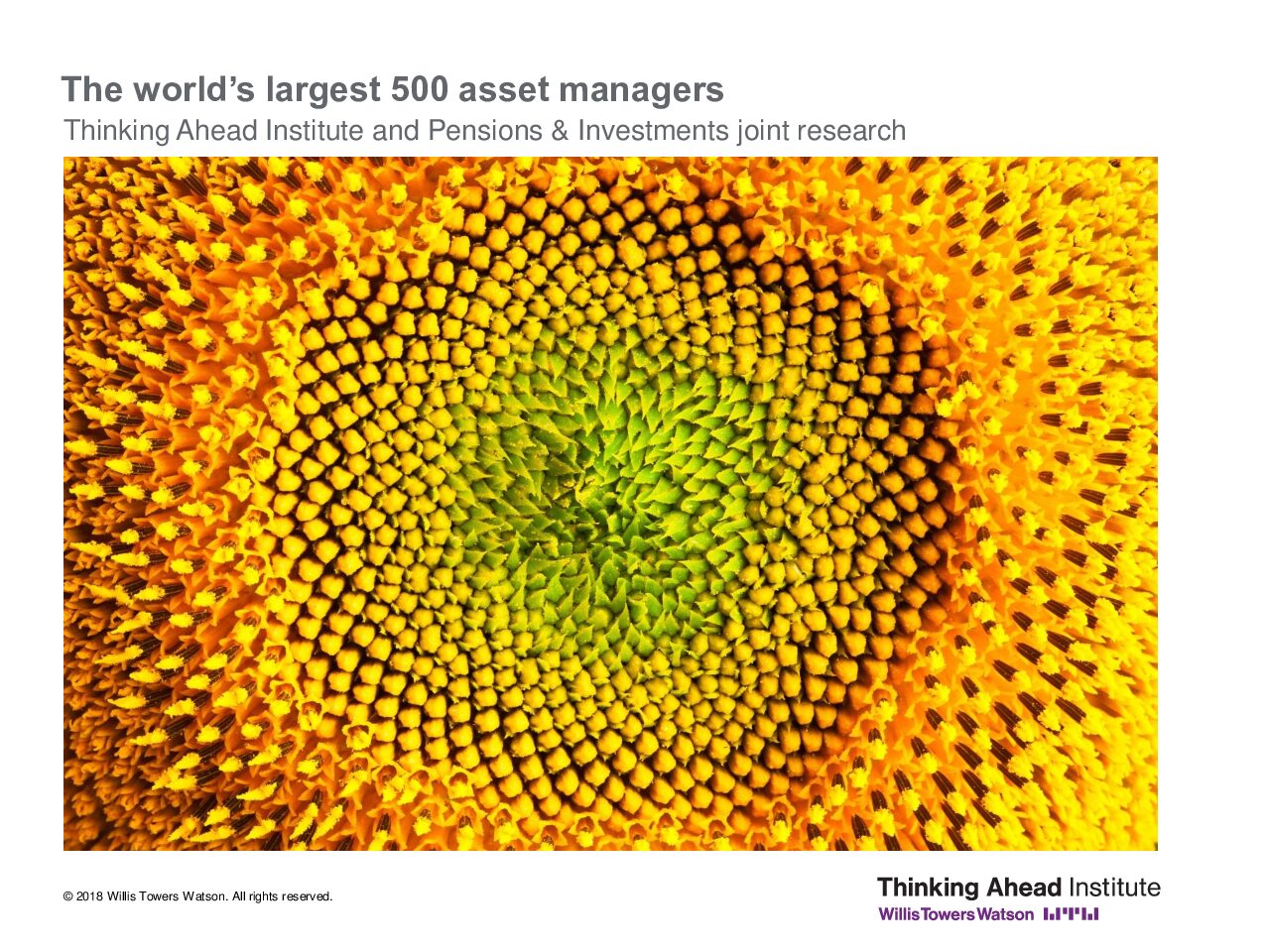Highlights – the numbers
- Total discretionary Assets under Management (AUM) of the 500 managers included in the ranking amounted to US$ 93.8 trillion at the end of 2017, up 15.6% from the end of 2016. Median AUM was US$ 43.9 billion in 2017, up from US$ 38.6 billion last year.
- BlackRock has retained its position as the largest asset manager in the ranking since 2009. For the fourth consecutive year, Vanguard and State Street complete the top three.
- AUM growth by region ranged from 9.6% in the U.K. to 15.9% for the rest of the world category. North America and Europe grew at 15.1% and 15.8% respectively while Japan grew at 12.6%.
- Participation of managers from developing countries remained the same as in 2016. However, their assets under management grew to US$ 3.5 trillion (14.1%)
- The top 20 managers’ share of the total assets increased for the fourth consecutive year, reaching 43.3%. Their AUM increased by 18.3% to US$ 40.6 trillion. Top 20 managers also experienced the fastest growth in AUM.
- U.S. managers dropped a member in the Top 20. The spot was filled by a European manager. Manager Participation is 12 U.S. to 8 Europe, with an AUM distribution of 69.8% to 30.2%.
- Independent asset managers made the majority (10) of the Top 20 ranked members followed by banks (7) and insurer-owned managers (3). This has remained unchanged since last year.
- Traditional asset classes of equity and fixed income continue to make up the majority of assets: 79.1% of all assets (46.5% equity, 32.6% fixed income), experiencing an increase of 18.7% combined during 2017.


Highlights: the backdrop
- The asset management industry is facing a period of massive change and disruption resulting from the confluence of several global megatrends: technological, demographic, economic, environmental and social
- This is not just an investment challenge – these trends have implications for every aspect of the asset manager’s structure: business model; operating model; people model; investment model; and distribution model
- The successful asset management firms over the next few years won’t dodge these industry realities
- Firms must find a response to the fast-evolving challenges presented by sustainability, technology and the shift away from traditional investment models
- The importance of culture will only grow – culture will be less and less a by-product and increasingly explicit and by-design

